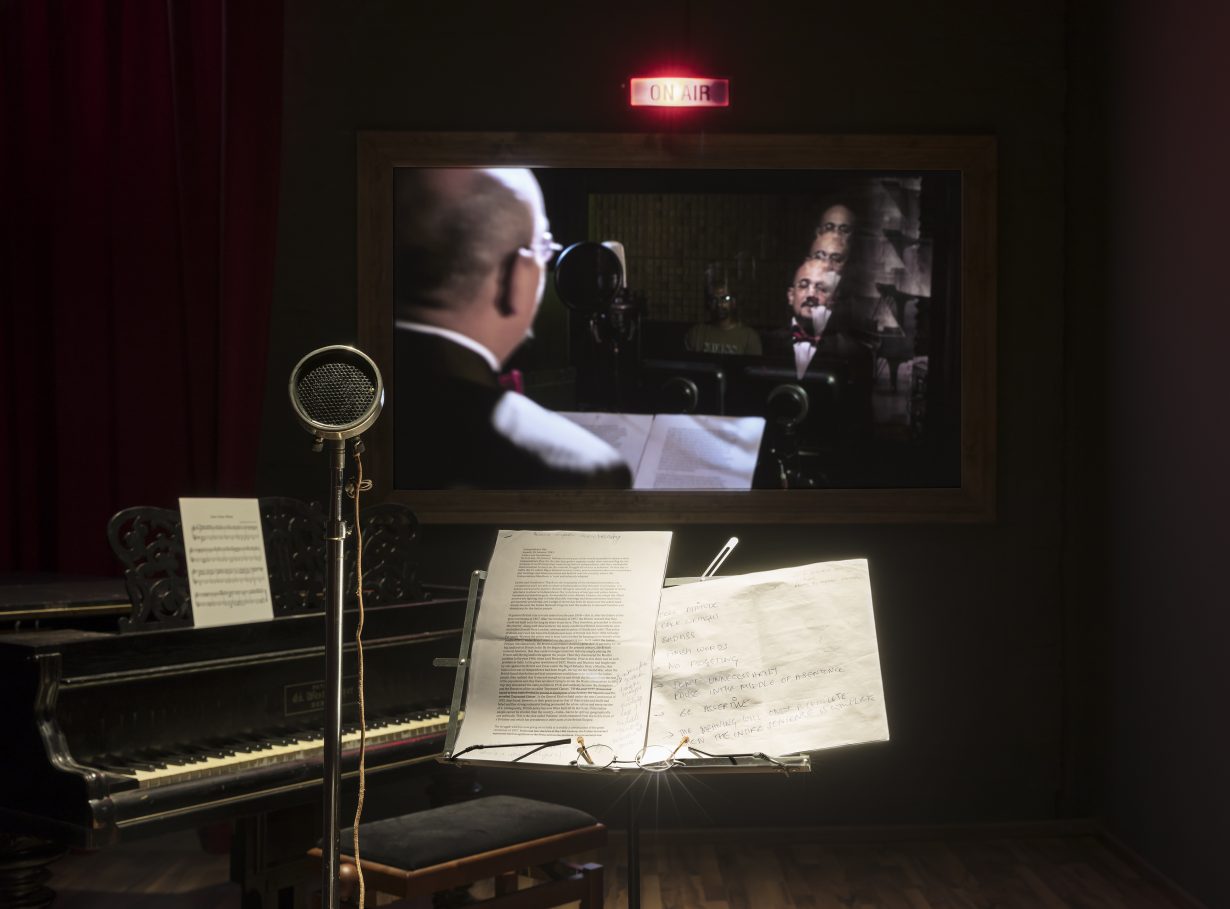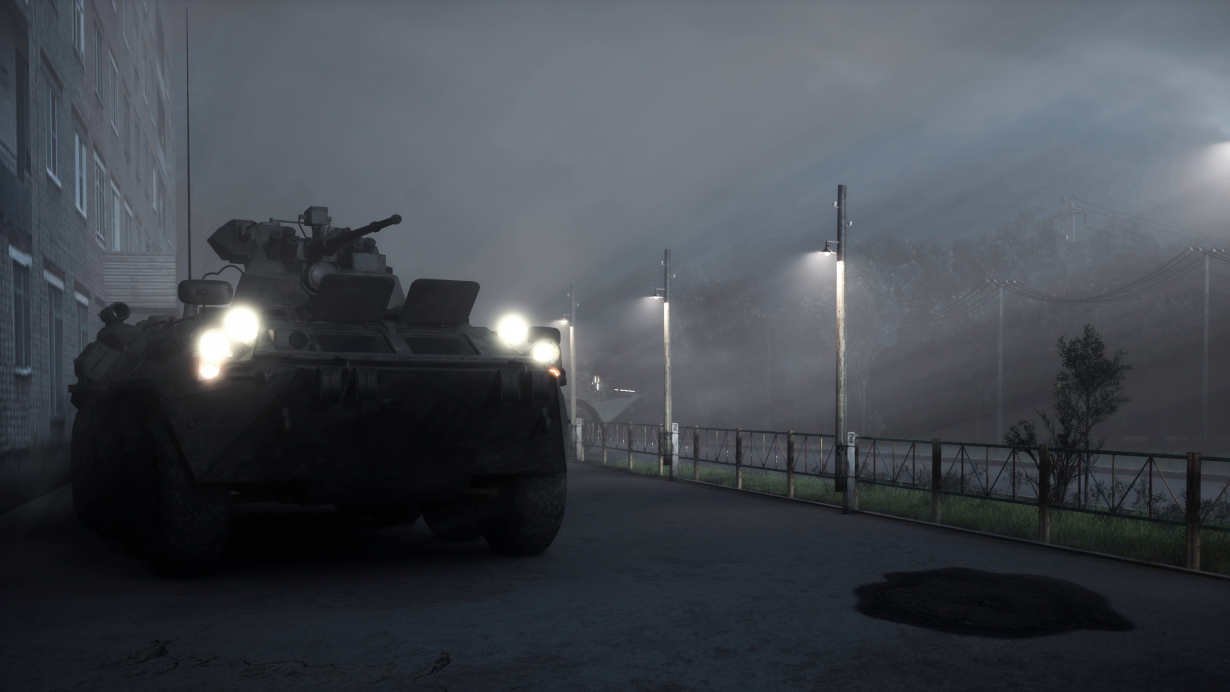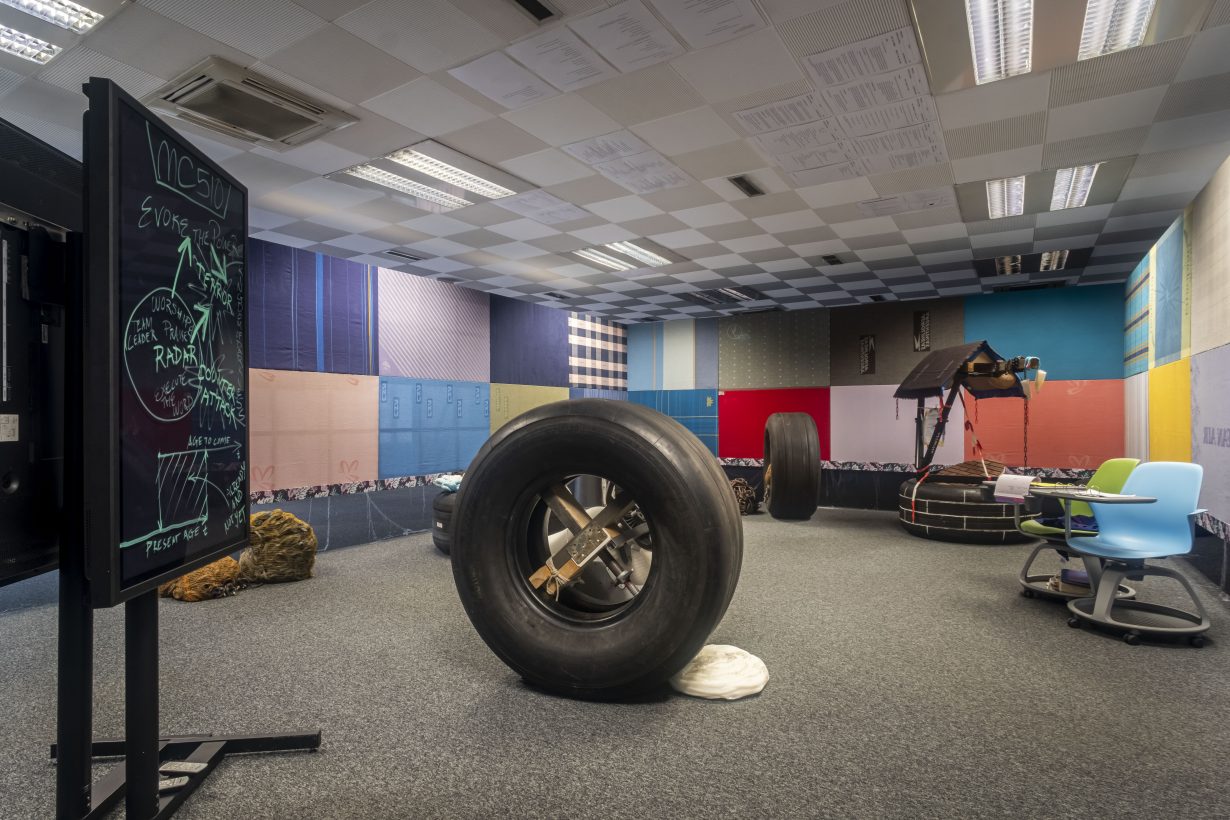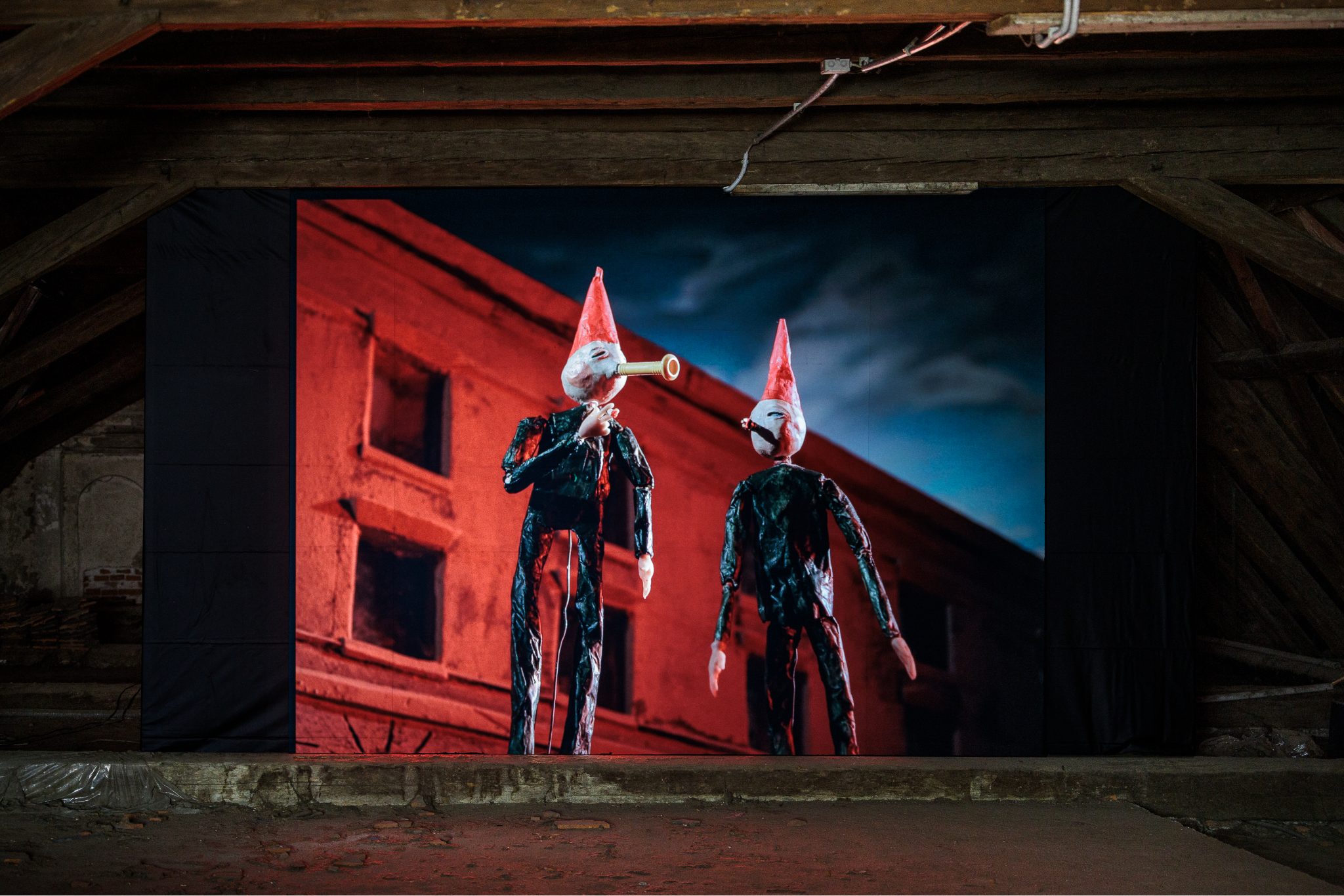The contemporary art festival’s latest edition, Humans and Demons, investigates what becomes of our ethics in dark times
If you’ve ever been to any semipolitical or historical exhibition in the Teutonic world, you’ll likely be accustomed to seeing Primo Levi quoted by a curator. ‘There exists a contagion of evil: the non-man dehumanizes others, every crime radiates outwards, proliferates, corrupts consciences… where will we draw the line… that separates the weak from the wicked?’ (from Levi’s If This Is a Man, 1947), cites the introduction to Humans and Demons, the 2023 edition of the annual Steirischer Herbst festival. And if you’ve been to any show of a similar persuasion in the last few years, you’ll have noticed many of them are keen to point out the ‘resurgence’ of the types of dehumanising forces Levi sought to elucidate: say, the increasing influence of the far right, online and in public; territorial expansionism in the form of Russia’s invasion of Ukraine (as if it were the only conflict to occur in recent memory); or the threat of advanced AI in the hands of bad actors. In this landscape, Russian director Ekaterina Degot is interested less in assuaging or combating such threats, and more in examining what becomes of us in their presence. Or, what will we do when shit hits the fan? Which ethical boundaries are broken and which are preserved? Through four group shows – each combines a focus on a single person from Graz’s history with a collection of commissioned and recent works – Humans and Demons explores a kind of Overton window of human ethics, and tests how far in each of us it may slide.
The first work on display in Demon Radio, which occupies a former call centre on the affluent outskirts of Graz, is Zuleikha Chaudhari’s Rehearsing Azaad Hind Radio (2018), for which a traditional recording booth has been installed in the space. On one side of the glass partition, seats have been arranged for visitors below an ‘On Air’ sign lit red; on the other, a film reenacts Azaad Hind Radio broadcasts, which, in cooperation with Nazi Germany and their Japanese allies, transmitted Indian nationalist messages from Second World War Berlin. It’s a murky place to start: the station’s leader Subhas Chandra Bose is often lionised for his defiance of British colonial rule. But Chaudhari intercuts the reenactment with footage from the 2016 Jawaharlal Nehru University sedition protests – which began with a demonstration against capital punishment laws and ended with the arrests of students and the student union president for sedition and dissent – in Narendra Modi’s Hindu nationalist India. Chaudhari traps the viewer, in this divided room, between two iterations of nationalist ideals (elements of Modi’s BJP openly take inspiration from the Nazi Party). In the dim and soundproofed studio, your focus is inescapably drawn through the glass to Bose’s lone voice in the dark. Reemerging into the call centre space – passing Dani Gal’s video adaptation of Frantz Fanon’s Black Skin, White Masks (1952), then through Michael Stevenson’s installation homage to a Californian clinic-cum-megachurch, the outside world appearing chimeric through the exhibition’s frosted window covers – a tone has been set.


Elsewhere, in Villa Perpetuum Mobile, the white wall and floor space inside Graz’s Forum Stadtpark is soaked in natural light. This exhibition is almost entirely devoted to a study of Stefan Marinov, a dissenter of post-Einsteinian physics whose tormented pursuit of free energy in the form of a perpetual motion machine (which, once in motion, could hypothetically work infinitely without any external energy input required, but the existence of which would violate laws of thermodynamics) led to his institutionalisation and subsequent suicide. His letters and articles are meticulously reproduced and arranged on Perspex desks; his axis designs for the machine are printed in translucent paper on the external windows. Artist Vadim Fishkin has directed an electric fan at a wall, onto which he projects papers dancing in the wind; Pedro Gómez-Egaña imagines Marinov’s kitchen table, into which mechanised metal ball-bearings swing from the ceiling like pendulums. It’s a spectral staging of a life directed by a concoction of conspiracy and idealism, and the damage it wrought on him; it’s also somewhat lightweight, struggling to stir much more than a reminder of parallel ills today.


But for an edition dedicated to casting characters from the past in art, its least-human (but by no means dehumanising) works are the most affecting. Onset (2023), by Anna Engelhardt and Mark Cinkevich, a video imagining the ‘life cycle’ of Russian military air bases in Ukraine, Belarus and Syria, screens in a side room of Demon Radio. In it, medieval ideas of humours and demonology are narrated over CGI footage of the bases. In one scene, shot as if by handheld camera, an implied onlooker explores nighttime scenes of an abandoned airbase, infiltrated by a shimmering structure coiled along the land like DNA chains, a ‘braid of cords grown to grotesque proportions… swollen with energy’ – as if our destructive materials, despite our attempts to ignore of them, mutate and invade the land we have long vacated. In the exhibition Church of Ruined Modernity (you’ll never guess which type of building it inhabits), Dana Kavelina’s remarkable Mother Lemberg, Mother Lviv (2023) loosely tells of the 1941 Lviv pogroms via stop-motion animation. With absurdity as its primary sensibility, combining devastating suffering, pitch-black humour and magic, Kavelina creates a tactile but dreamlike world. In one sequence, we enter a cabaret theatre where a set of teeth talk while hooked up to some kind of life-support machine. Another finds an everyman character standing in a desert before a pile of bodies: one atop the pile suddenly animates, turning her head to the camera, stands gingerly, then sprouts from the waist up into a shrub, ivy green branches emerging from clay flesh peeling back like a sweet wrapper. Neither works seek to teach, narrate or protest; rather, theirs is an expressive, poetic language – they remind us that growth and decay, genesis and annihilation, beauty and revulsion, are rarely far apart.


The show is so intent on characterisation and telling stories when the ideas it explores are far more gripping than the lives it seeks to portray. How do we remember injustice, atrocity or evil? How might we anticipate, or imagine it? What a shame, then, that its own moral fibre is somewhat tarnished by the fourth exhibition, Submarine Frieda, in Gries, a former marshland and now suburb historically and presently (according to a wall text in the exhibition) home to the city’s ‘lower classes and migrants’. Before a square window looking onto the street is an array of cinema chairs, where we are invited to ‘observe the buzz of this very lively and exceptional part of town’ – a barbershop, a kebab stand, a bus station. It’s a moment of, frankly, rank insensitivity. And when you’re done viewing the working class pass by like a kind of human safari, there’s an actual fish tank inside the space, as if to grimly double down on the point. Or perhaps this is Humans and Demons unwittingly reinforcing its own conclusion: our ethics and morals are in perpetual motion, always liable to change, to vary between us, to be born and die – with or without our noticing.
Steirischer Herbst 2023: Humans and Demons, Various venues, Graz, through 15 October
